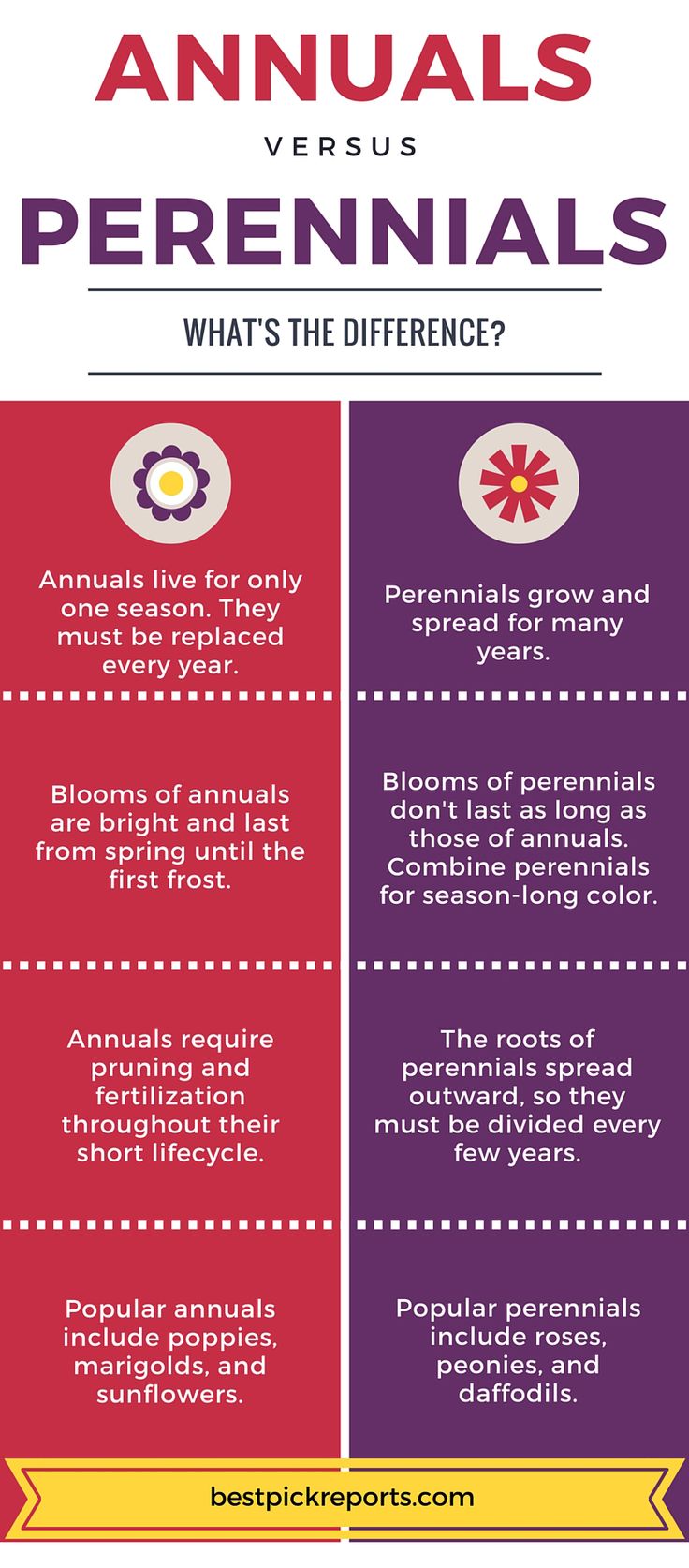Choosing Between Annuals And Perennials: A Practical Guide For Gardeners

Table of Contents
Understanding Annual Plants
What are Annuals?
Annual plants complete their entire life cycle – from seed to flower to seed again – within a single growing season. This means they germinate, grow, bloom, produce seeds, and then die all within the span of a year. This rapid life cycle makes them ideal for quick seasonal color and filling gaps in your flower beds.
- Examples of popular annuals: Zinnias, petunias, sunflowers, marigolds, impatiens, cosmos. These offer a vibrant array of colors and textures.
- Benefits of annuals:
- Fast-growing and provide quick blooms.
- Wide variety of colors, shapes, and sizes available.
- Excellent for filling gaps in flower beds and adding pops of color.
- Perfect for container gardening.
- Relatively inexpensive to purchase.
Pros and Cons of Annuals
Let's weigh the advantages and disadvantages to help you decide if annuals are right for your garden.
- Pros:
- Wide color selection for endless creative possibilities in your garden design.
- Fast-growing, providing instant gratification and quick seasonal impact.
- Relatively inexpensive compared to perennials.
- Easy to plant, even for beginner gardeners.
- Cons:
- Need replanting annually, requiring more time and effort.
- Often require more maintenance, including regular watering and deadheading (removing spent blooms).
- Can be more susceptible to pests and diseases compared to some established perennials.
Understanding Perennial Plants
What are Perennials?
Perennial plants live for more than two years, returning year after year. They establish themselves, grow stronger each season, and offer long-term structure and interest in your garden.
- Examples of popular perennials: Hostas, coneflowers (Echinacea), daylilies (Hemerocallis), lavender, salvia. These contribute significantly to long-term garden structure and beauty.
- Benefits of perennials:
- Return year after year, reducing the need for frequent replanting.
- Often require less maintenance once established.
- Many attract pollinators like bees and butterflies, benefiting the ecosystem.
- Provide varied textures and foliage interest throughout the seasons, extending the beauty beyond just flowering periods.
Pros and Cons of Perennials
Choosing perennials has its advantages and disadvantages, too.
- Pros:
- Long-lasting beauty and reduced planting frequency saves time and effort in the long run.
- Often attract beneficial pollinators, enhancing your garden's biodiversity.
- Provide structure and a framework for your garden design, offering year-round interest.
- Can create a more sustainable and eco-friendly garden.
- Cons:
- Slower growth compared to annuals; you may not see immediate results.
- More expensive initially than annuals.
- May need dividing every few years to prevent overcrowding.
- Can be susceptible to specific pests and diseases, requiring targeted treatment.
Choosing the Right Plants for Your Garden
Factors to Consider
Selecting the perfect plants involves careful consideration of several factors:
- Climate and Hardiness Zones: Choose plants that thrive in your specific USDA hardiness zone.
- Soil Type: Consider your soil's drainage, pH, and fertility. Amend the soil as needed to suit your chosen plants.
- Sunlight Exposure: Assess how much sun each area of your garden receives. Choose plants that match the sunlight conditions.
- Desired Garden Style: Your personal preference for a cottage garden, formal garden, or a xeriscape (water-wise) landscape will influence plant selection.
Combining Annuals and Perennials
For a truly vibrant and dynamic garden, consider the benefits of combining annuals and perennials:
- Annuals provide bursts of intense color throughout the growing season.
- Perennials offer long-term structure and a foundation for your garden design.
- Use annuals to fill in gaps between perennials or to add pops of color.
- Combining both creates a balanced and aesthetically pleasing garden with year-round interest.
Conclusion
Choosing between annuals and perennials depends on your gardening goals, experience level, and the specific needs of your garden space. Annuals offer instant gratification with vibrant color, while perennials provide long-term structure and, often, less maintenance over time. Consider combining both for the best results – a stunning display of color and texture throughout the entire growing season!
Ready to design your dream garden? Learn more about the best annuals and perennials for your region and begin planning your planting strategy today! Start exploring the options available for your perfect mix of annuals and perennials and enjoy the beauty of your flourishing garden.

Featured Posts
-
 Auto Dealers Double Down Renewed Resistance To Electric Vehicle Mandates
May 29, 2025
Auto Dealers Double Down Renewed Resistance To Electric Vehicle Mandates
May 29, 2025 -
 Starbase L Ambitieux Projet D Elon Musk Au Texas
May 29, 2025
Starbase L Ambitieux Projet D Elon Musk Au Texas
May 29, 2025 -
 360 Million Euro Cruise Liner At Liverpool Docks
May 29, 2025
360 Million Euro Cruise Liner At Liverpool Docks
May 29, 2025 -
 Morgan Wallens Music Catalog 200 Million Sale
May 29, 2025
Morgan Wallens Music Catalog 200 Million Sale
May 29, 2025 -
 Robinhood Desktop Platform Launches In The Uk
May 29, 2025
Robinhood Desktop Platform Launches In The Uk
May 29, 2025
Latest Posts
-
 Measles Elimination In Canada Threatened Could Status Be Lost This Fall
May 30, 2025
Measles Elimination In Canada Threatened Could Status Be Lost This Fall
May 30, 2025 -
 Texas Measles Outbreak Fuels Spread In Israel
May 30, 2025
Texas Measles Outbreak Fuels Spread In Israel
May 30, 2025 -
 Canadas Measles Elimination Status At Risk Fall 2024 A Critical Point
May 30, 2025
Canadas Measles Elimination Status At Risk Fall 2024 A Critical Point
May 30, 2025 -
 Us Measles Cases At 1 046 Following Indiana Outbreak Conclusion
May 30, 2025
Us Measles Cases At 1 046 Following Indiana Outbreak Conclusion
May 30, 2025 -
 Measles Cases Rise In Israel Linked To Texas Outbreak
May 30, 2025
Measles Cases Rise In Israel Linked To Texas Outbreak
May 30, 2025
